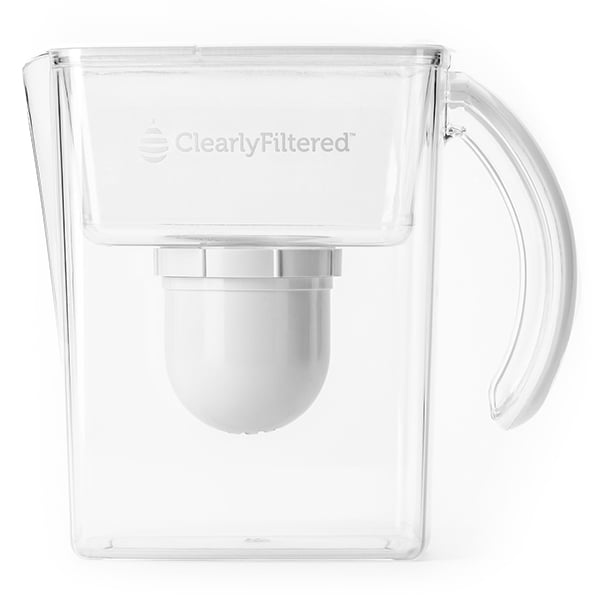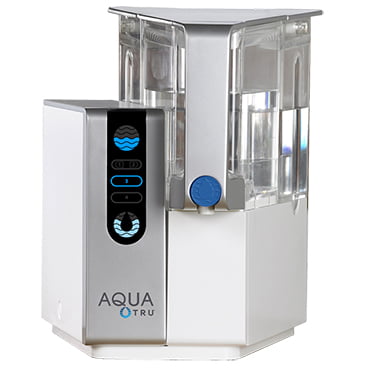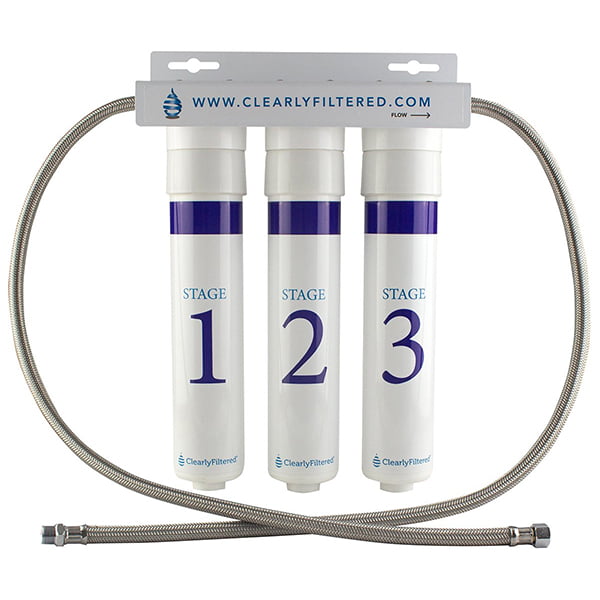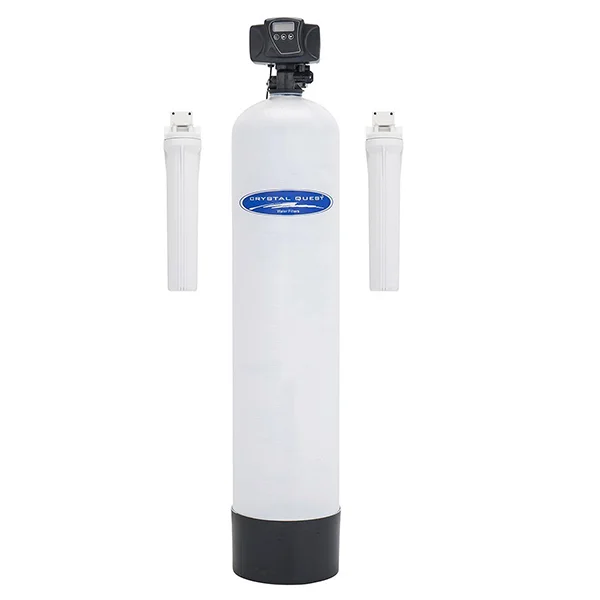How to Remove Fluoride and Chlorine from Water
Written by: Gene Fitzgerald // Last Updated: Sep 7, 2023
This page may contain affiliate links. If you buy a product or service through such a link we earn a commission at no extra cost to you. Learn more.
Chlorine and fluoride are found in almost all municipal water supplies in the USA.
While they have been put there for the benefit of public health, there are some concerns about overexposure to them causing health issues.
For this reason, many Americans are looking at ways to remove chlorine and fluoride from their drinking water supplies. Let’s run through all the best possible ways to do that.
Key Takeaways
- There are three main methods of removing fluoride and chlorine from water: using a reverse osmosis system, water distillation, or bone char filtration.
- Other methods of filtration will remove one or the other, but it is possible in those cases to combine different methods to filter both chlorine and fluoride.
How to Remove Fluoride and Chlorine from Water
There are three main methods of removing both chlorine and fluoride from water;
- Reverse osmosis (with a carbon filter),
- Water distillation,
- And bone char filtration.
Other water purification methods remove either one or the other, and in those cases, you can combine two or more filtration methods.
Reverse Osmosis Water Purification
Reverse osmosis is excellent at removing fluoride, but chlorine is damaging to the semipermeable membrane. That’s why RO systems have at least one carbon pre-filtration stage that removes the chlorine (usually well above 95%) before the water reaches the membrane.
For this reason, RO water purification makes the list for an effective way to remove both fluoride and chlorine from your water. Some systems are able to remove over 93% of fluoride!
Water Distillation
Water distillation is effective at removing both chlorine and fluoride from water, resulting in very high water purity.
Chlorine will turn to gas as it warms up, making the heating process from distillation highly effective at dissipating any chlorine from the water supply. If you are using a distiller with no post-carbon filter, it can remove 97% of chlorine. With a post-carbon filter, 99% is removed.
Fluoride does not turn to gas at a high temperature, instead, it is left behind in the boiling chamber as the water turns to vapor. Reduction rate: 99% or more.
Bone Char Filtration
Bone char filtration is more of a method to reduce fluoride and chlorine rather than remove it and is not as effective as reverse osmosis or distillation. Nevertheless, bone char filtration can reduce fluoride by up to 90 to 95%.
Most experts prefer adding activated carbon to bone char filtration to make chlorine removal more effective.
Combining 2 or More Treatment Methods
If none of the above methods are suitable for you, combining two or more filtration mediums to remove chlorine and fluoride is possible. Here are a few of your options.
Activated Carbon
As mentioned earlier, activated carbon is an excellent method of chlorine removal, up to 99.9%.
Tiny pores on the surface of the carbon filter media trap the chlorine and prevent it from moving into the purified water.
Purchasing the appropriate size is important, as the greater the water flow, the bigger the filter needs to be to ensure the water has enough contact with the filter for chlorine removal to occur.
Activated Alumina
Activated Alumina is an aluminum oxide with a very large and porous surface area. It effectively eliminates most of the fluoride in water, and the longer it is exposed to the water, the more it will remove.
Anion Exchange
One of the most common filtering methods for water, anion exchange is another effective method of removing fluoride. It works best if the water is at a pH of 7 and can remove 90-95% of fluoride.
UV Disinfection
While UV disinfection will reduce chlorine, it is less effective than activated carbon.
UV wavelengths of 180 to 400 nm cause chemical reactions that separate free chlorine to form hydrochloric acid.
Chemical Dechlorination
Sodium thiosulfate and sulfite, potassium metabisulfite, and vitamin C can be used as dechlorinators to neutralize the chlorine in water. They work quite fast, usually completing the process in a maximum of 5 minutes.
The Most Recommended Water Filters to Remove Chlorine and Fluoride
How Do Chlorine and Fluoride Enter Our Water Supplies?
Chlorine and fluoride in tap water in the USA have been added deliberately, and for good reasons:
- Chlorination of water supplies helps to disinfect water from harmful viruses, bacteria, and parasites and has saved countless lives from succumbing to waterborne illness since it was introduced in 1908. It can also help to rid the water of bad smells and tastes.
- Fluoride has been added to strengthen teeth, but these days there is debate about whether or not this is really needed, considering advancements in dental care and oral hygiene.
What Are the Potential Health Effects of Chlorine and Fluoride in Water?
While adding chlorine and fluoride to water supplies was done to increase overall public health, too much of either has been linked to certain health issues. With fluoride already in toothpaste, food sources, cookware, and some medications, having it in water as well might be overkill, as the amount of fluoride individuals are consuming cannot really be controlled.
The health benefits of chlorination treatment in water outweigh the potential risks. Still, there is some concern over disinfection byproducts produced when chlorine interacts with organic matter being linked to health issues.
Fluorosis
Dental and skeletal fluorosis occurs from overconsumption of fluoride, as teeth and bones store 99% of it. Skeletal fluorosis can cause joint pain and stiffness.
Hypothyroidism
The function of the thyroid gland can be affected by fluoride, causing levels of thyroid hormones (T3 and T4) to be reduced and TSH to be increased. This causes the thyroid to underperform, in a condition known as hypothyroidism.
Neurological Effects
While 99% of fluoride is stored in bones and teeth, the other 1% can be carried in the brain and other soft tissue. This can lead to calcification of the pineal gland, which can cause decreased energy levels, sleep issues, depression, and other neurological problems.
Fluoride Intoxication
If a considerable amount of fluoride is consumed, it can cause fluoride intoxication. Symptoms of fluoride intoxication include abdominal pain, a salty or soapy taste in the mouth, diarrhea, drooling, headaches, low blood levels of calcium and potassium, irregular heartbeat, and in severe cases, even death.
Intoxication is rare and usually only occurs after consistently consuming high quantities of solute fluoride. For a dose to be lethal in adults, fluoride per kg body weight must be around 32-64 mg.
Disinfection Byproducts
As explained before, when chlorine interacts with particular organic matter, it can result in disinfection byproducts. The most worrying ones are trihalomethanes (THMs).
Consistent exposure to these has been tentatively linked with increased cancer risk in animals and humans in some studies, and other studies show an increased risk of miscarriage in pregnant women that drank a lot of THM-heavy tap water.
That said, more research is needed in this area.
Damaged Hair and Skin
Chlorine can strip the hair and skin of natural oils, causing dryness, itching, hair fall, changes in hair condition and color, and skin issues. Some scientists believe it can be a factor in premature aging.
Additional Tips That Could Reduce Your Daily Fluoride/Chlorine Exposure
If you are concerned about the amount of chlorine and fluoride you may be exposed to in everyday life, there are some things you can do to potentially reduce your exposure.
For fluoride, you can;
- Eat more organic foods that have not been treated with pesticides that contain fluoride.
- Eat less processed foods that may have been treated with fluoridated water during the processing stages.
- Avoid fluoridated salt.
- Drink less green and black tea as well as coffee, which can be high in fluoride.
- Use a fluoride-free toothpaste.
- Avoid cookware that is coated in Teflon, which contains fluoride.
- Avoid medication that contains fluoride and see if your doctor can prescribe you an alternative.
For chlorine, you can;
- Avoid chlorinated pools and shower immediately after swimming.
- Let the water sit before drinking or using it so that the chlorine has time to dissipate.
- Infuse your water with fruits containing vitamin C. Vitamin C is a dechlorinator and will help to remove it from the water.
Can You Boil Chlorine and Fluoride Out of Water?
While boiling water is effective for the removal of chlorine, it does nothing to remove fluoride. To remove chlorine, simply heating water to a high temperature that is not quite boiling is enough for between 10 and 20 minutes.
Boiling water is ineffective at removing fluoride and may even make the concentration of fluoride in your water stronger. The volume of water will reduce after boiling, but the fluoride will stay in, now in a more concentrated amount.
If you have any questions about how to remove chlorine and fluoride from tap water please don’t hesitate to leave a comment below!
Information provided on BOS is for educational purposes only. The products and services we review may not be right for your individual circumstances.
We adhere to strict editorial guidelines. Rest assured, the opinions expressed have not been provided, reviewed, or otherwise endorsed by our partners – they are unbiased, independent, and the author’s alone. Our licensed experts fact-check all content for accuracy. It is accurate as of the date posted and to the best of our knowledge.







